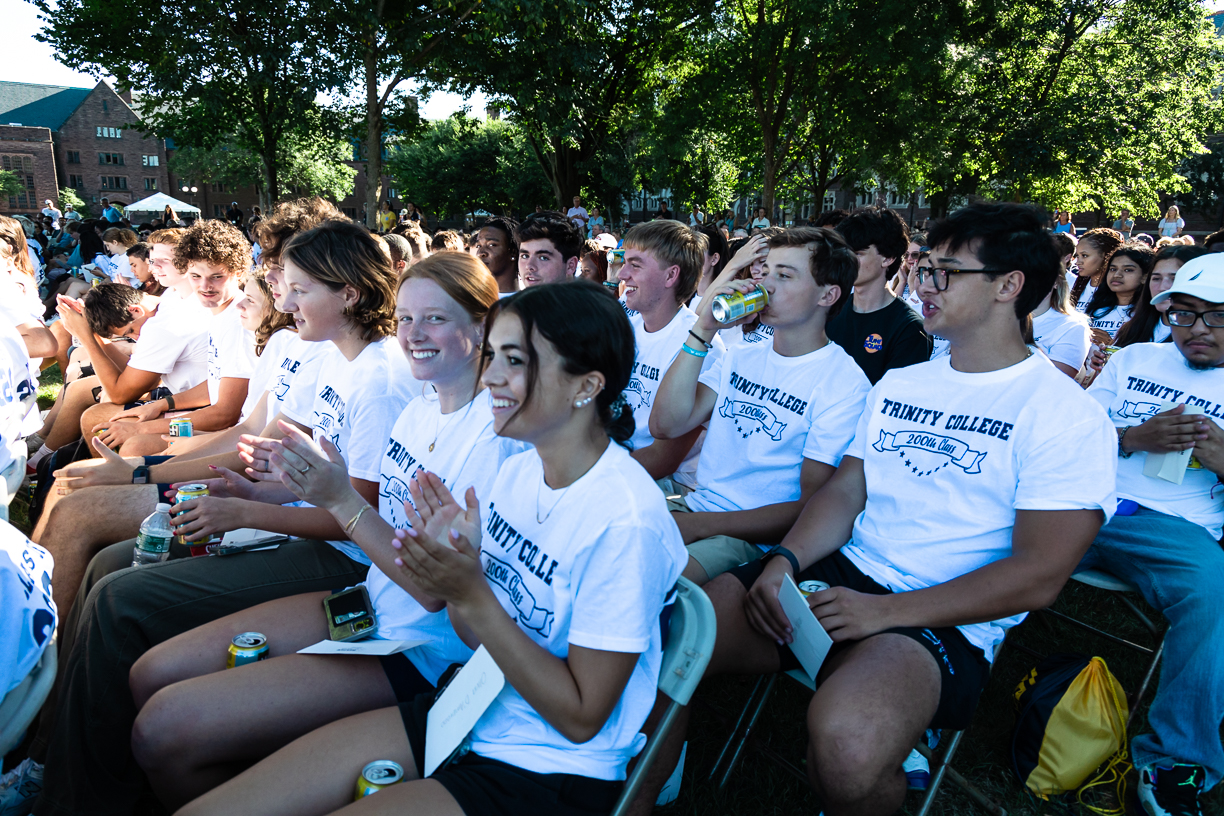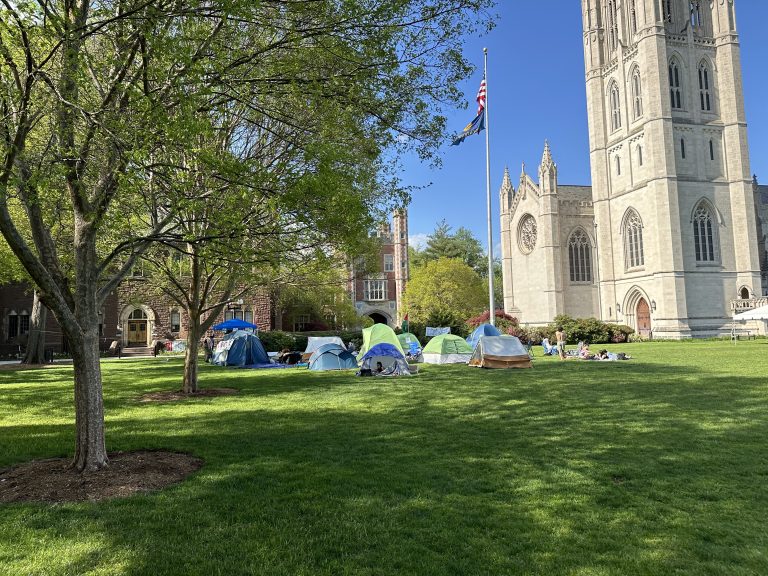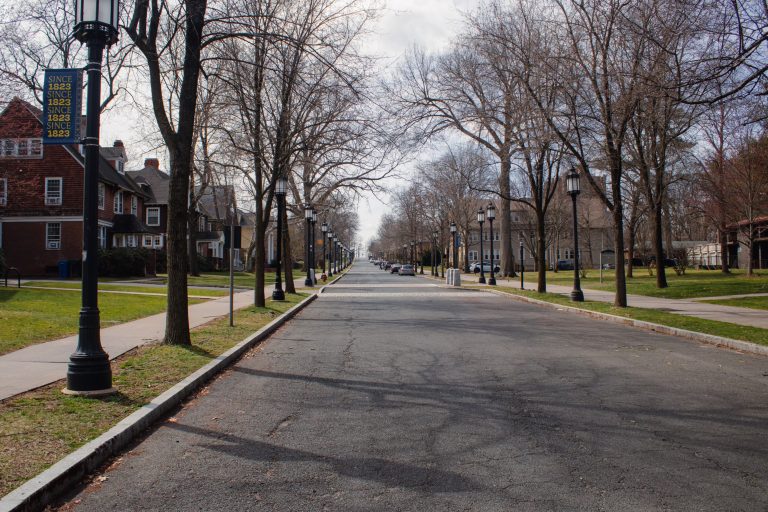Olivia Silvey ’25
News Editor
Trinity recently announced the enrollment of the Class of 2026 in a post on the College’s website from Aug. 31.
The incoming class includes 575 students in addition to 27 transfer students and five new Individualized Program students. 251 of these students join through two rounds of Early Decision, and 11 come after deferring admission last year.
Trinity received a total of 6,224 applications this admissions cycle which is a five-year high for the College. In comparison, there were 5,697 applicants for the Class of 2025; 5,951 for the Class of 2024; 6,121 for the Class of 2023; and 6,112 for the Class of 2022. About 36% of this year’s applicants were accepted which is an increase from 35% for the Class of 2024 and 33% for the Class of 2023.
The Class of 2026 represents 35 states, the District of Columbia, and 46 countries. The majority of the incoming class (342 students) comes from outside of the New England region, and 91 students are from the College’s home state of Connecticut.
This year’s newest group includes 94 international students and 135 American students of color which includes multiethnic students. 31 students have a parent or sibling who attended Trinity while 85 will be the first in their family to earn a bachelor’s degree. 166 of these students are recruited athletes and 53 percent of the class receives financial aid.
Furthermore, there are 9 Posse scholars, 19 Presidential Scholars, and 85 1823 scholars. There are also 24 students are Davis United World College Scholars and two new DAVIS UWC transfer students.
Omitted from the announcement is the total number of students who chose not to submit standardized test scores. Director of Admissions Athony Berry told the Tripod in April that 82% of students (167 total) admitted to the Class of 2026 through Early Decision did not submit any scores.
The results come after Dean of Admissions and Financial Aid Mathew S. Hyde told the Tripod in July that the College was delaying the announcement until the start of the academic year. Explaining the delay, Hyde told the Tripod that the College would like to present the data in a “thoughtful and intentional way.”
Instead of “throwing out numbers,” Hyde stated that the College wanted to contextualize the incoming class by first reaching out to the Class of 2026 and “pulling student stories.” Hyde told the Tripod that he had a letter drafted for students and had been reviewing their applications to Trinity.
Hyde, who started his new position in July, told the Tripod at the time that the numbers for the Class of 2026 are “strong.” He indicated that the delay was strictly due to an effort to be “intentional with language and presentation.” Hyde noted that he has “never felt comfortable” with “throwing out numbers,” and that he wanted to present the class in a more personal way.
At the time Hyde made these comments, many of Trinity’s peer institutions in the New England Small College Athletic Conference had already released data on their incoming students including Williams, Amherst, Middlebury, Bowdoin, Colby, Hamilton, Wesleyan, and Tufts.
Prior to the College’s announcement in August, the Tripod reported the Early Decision results for the Class of 2026. At the time, the College received a total of 6,198 applications for this year’s admissions cycle which is a five-year high. Through two rounds of Early Decision, the College accepted 257 students out of 472 applications for a 54.4% acceptance rate. 16% of ED admits are first-generation college students, 14% are international students, 21% are American students of color, and 62% are student athletes. Director of Admissions Anthony Berry told the Tripod in April that 66% of students (167 total) admitted through ED were given some level of financial aid, and that 82% of students did not submit standardized test scores.
Responding to questions regarding the increased number of applications, Berry told the Tripod in Aprilthat “It’s not possible to isolate the reasons why more students applied to Trinity this year since every student has their own reason for deciding to apply.” He indicated that the increase in applications for the Class of 2026 could be attributed to multiple factors including more in-person campus tours being offered, more access to information through virtual events, more in-person college fairs across high schools, and stronger student and parent satisfaction with their Trinity experience.
Nat Smitobol, a former Assistant Director of Admissions at New York University and a current college admissions counselor at IvyWise, attributed the rise in applicants this year to the increased number of students from less privileged backgrounds returning to the applicant pool. When discussing last year’s admissions cycle, Smitobol told the Tripod in April that “[t]he students most profoundly affected by the pandemic did not apply. The easiest way to capture that data is to look at the Common Application data, and how many kids were requesting a fee waiver or how many kids were indicating that they are first generation.”











+ There are no comments
Add yours